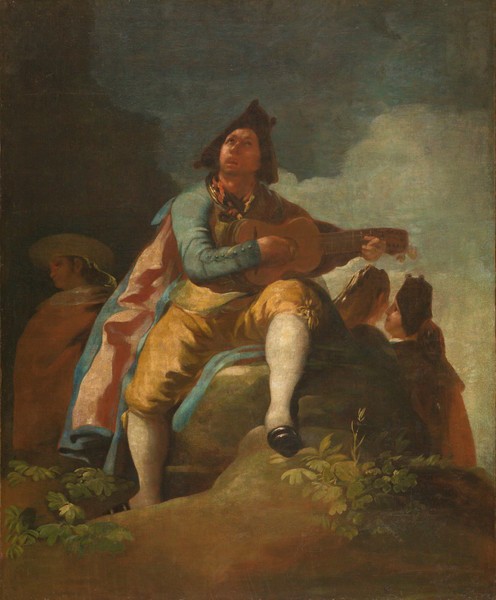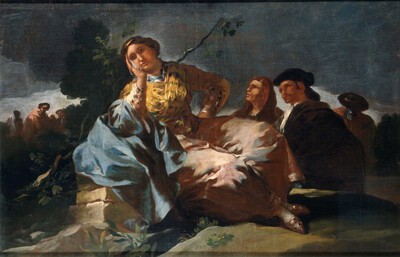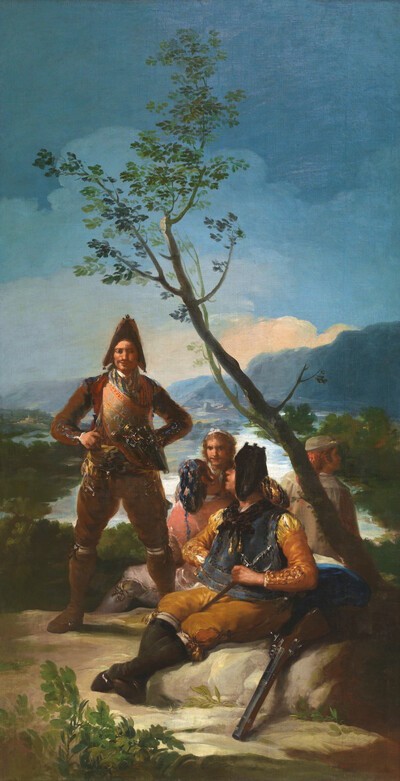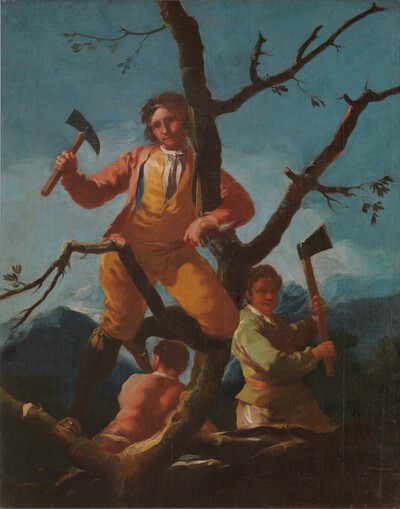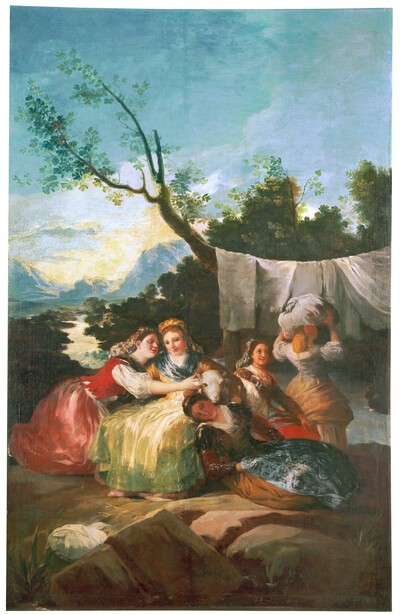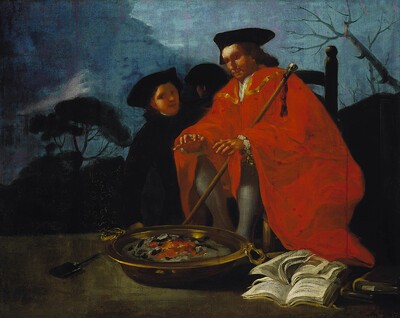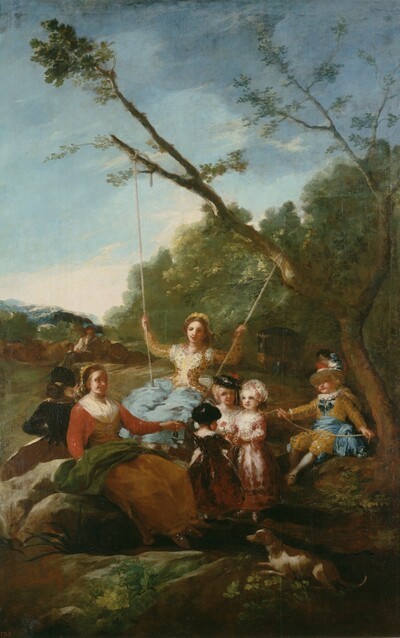- Cronología
- 1779
- Ubicación
- The Prado National Museum. Madrid, Madrid, Spain
- Dimensiones
- 137 x 112 cm
- Técnica y soporte
- Oil on canvas
- Reconocimiento de la autoría de Goya
- Documented work
- Titular
- El Prado National Museum
- Ficha: realización/revisión
- 30 Nov 2009 / 14 Jun 2023
- Inventario
- (P00743)
- Otros títulos:
-
The Singer (El cantador)
See The Blind Guitarist.
This cartoon was delivered to the Royal Tapestry Factory on 24 January 1780, along with ten other cartoons, completing the decoration of the antechamber to the bedroom. These eleven tapestry cartoons - almost certain to have been made between 21 July 1779, when the artist delivered A Stickball Game and The Swing, and this delivery in January 1780 - were executed very rapidly. It is very likely that Goya was aware of the planned suspension of manufacturing work at the factory and was anxious to finish his commissions and receive his wages.
In 1870, the tapestry cartoons that had been stored in the basements of the Palacio de Oriente in Madrid were moved to the Prado Museum, known back then as the Royal Painting and Sculpture Museum. In was then that six cartoons by Goya were discovered to be missing; among them was this work (see Children with a Cart). Thanks to the painter Raimundo de Madrazo, in 1895 two of the cartoons, Majo with Guitar and Dogs and Hunting Gear, were donated back to the Prado Museum after being acquired in Paris.
This overdoor piece decorated the north wall of the bedroom antechamber, where it formed a pair with another overdoor, The Woodcutters.
A majo plays a lament on his guitar and sings to the sky with a melancholic air, whilst behind him some other figures turn their backs on him, ignoring him. The position of his legs appears exaggerated due to the fact that this piece was designed to be hung above a door.
Tomlinson believes that Goya is representing here the loneliness of he who does not find love, far removed from the flirtatious scenes that the same writer sees in the rest of the tapestries decorating the antechamber to the royal bedroom.
-
Obras maestras de la pintura española de los siglos XVI al XIXMuseo PushkinMoscow1980Exhibited also at the State Hermitage Museum, San Petersburgocat. 15
-
Goya. Das Zeitalter der Revolucionen. Kunst um 1800 (1980 – 1981)Hamburger KunsthalleHamburg1980cat. 283
-
Exposición de pintura españolaBelgrade1981cat. 15
-
Goya. 250 AniversarioMuseo Nacional del PradoMadrid1996consultant editor Juan J. Luna. From March 29th to June 2nd 1996cat. 32
-
Tapices y cartones de GoyaPalacio RealMadrid1996organized by Patrimonio Nacional and Sociedad Estatal Goya 96 at the Palacio Real, Madrid, consultant editor Concha Herrero Carretero. May to June 1996cat. 25
-
Goya en Madrid. Cartones para tapices 1775-1794Museo Nacional del PradoMadrid2014p. 181
-
Tapices de GoyaMadridPatrimonio Nacional1946pp. 86, 116, 243, cat. 37 y láms. 134-13
-
L'œuvre peint de Goya. 4 volsParís1928-1950vol. I, p. 87, cat. 28
-
Vie et ouvre de Francisco de GoyaParísOffice du livre1970pp. 76, 89, cat. 140
-
BarcelonaPolígrafa1970vol. I, p. 249, cat. 92
-
L’opera pittorica completa di GoyaMilanRizzoli1974pp. 95-96, cat.98
-
Francisco de Goya, cartones y tapicescol. col. "Espasa Arte"Espasa Calpe1987pp. 61, 110, 282, cat. 41C
-
Francisco de Goya, 4 vols.ZaragozaCaja de Ahorros de Zaragoza, Aragón y Rioja1980-1982vol. I, p, 114 y vol. II, p. 33 (il.)
-
Goya, Saturno y melancolía. Consideraciones sobre el arte de GoyaStockholmAlquimis & Wiksell1962pp. 35-39 y p. 36 (il.)
-
Francisco de Goya. Los cartones para tapices y los comienzos de su carrera en la corte de Madridcol. col. "Ensayos de Arte Cátedra"MadridCátedra1987pp. 153, 155-156 y p. 152 (il.)
-
Goya. 250 AniversarioMadridMuseo del Prado1996pp. 311-312, cat. 32 y p. 107 (il.)
-
Salas del Palacio Real de El Pardo para las que se tejieron tapices sobre cartones de Francisco de Goya: identificación de las habitaciones y ajuste de las obras de Goya en los alzados de las paredesin HERRERO CARRETERO, Concha (curator, Tapices y cartones de Goya (catalogue of the exhibition organizated at the Palacio Real de Madrid, from may to june 1996)MadridPatrimonio Nacional, Goya 96, Lunwerg1996p. 169 (il.)
-
Goya en Madrid. Cartones para tapices 1775-1794MadridMuseo Nacional del Prado2014p. 181
